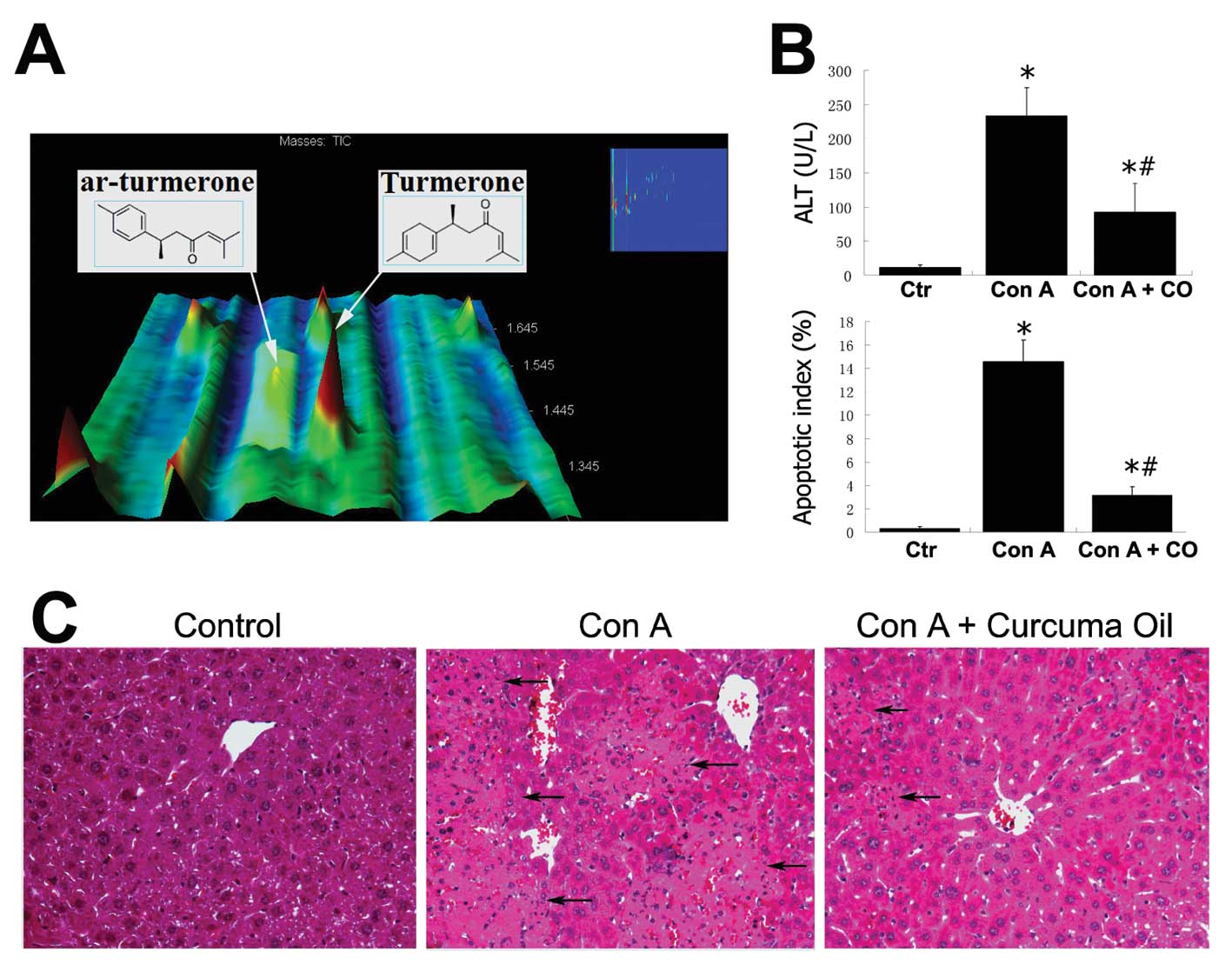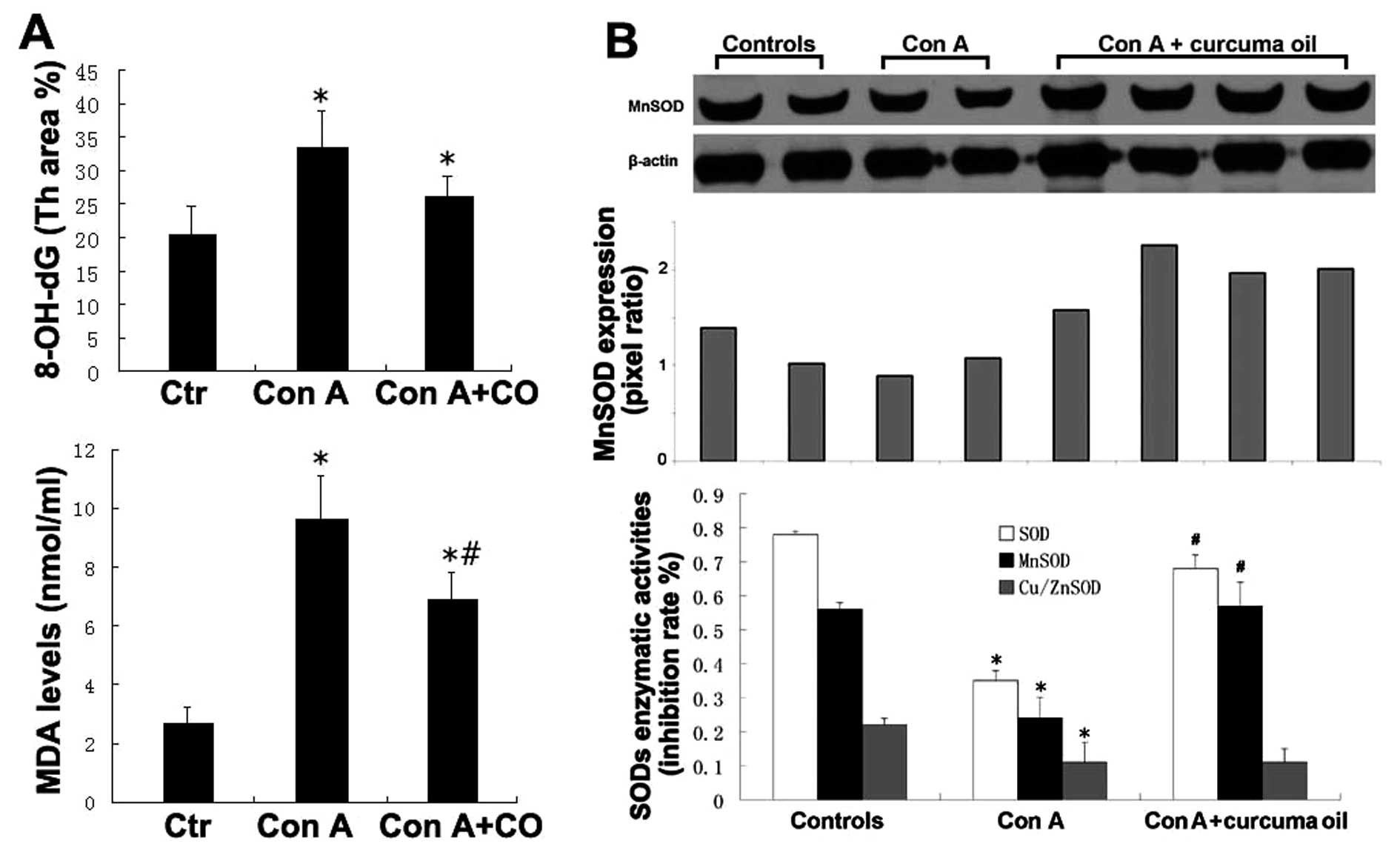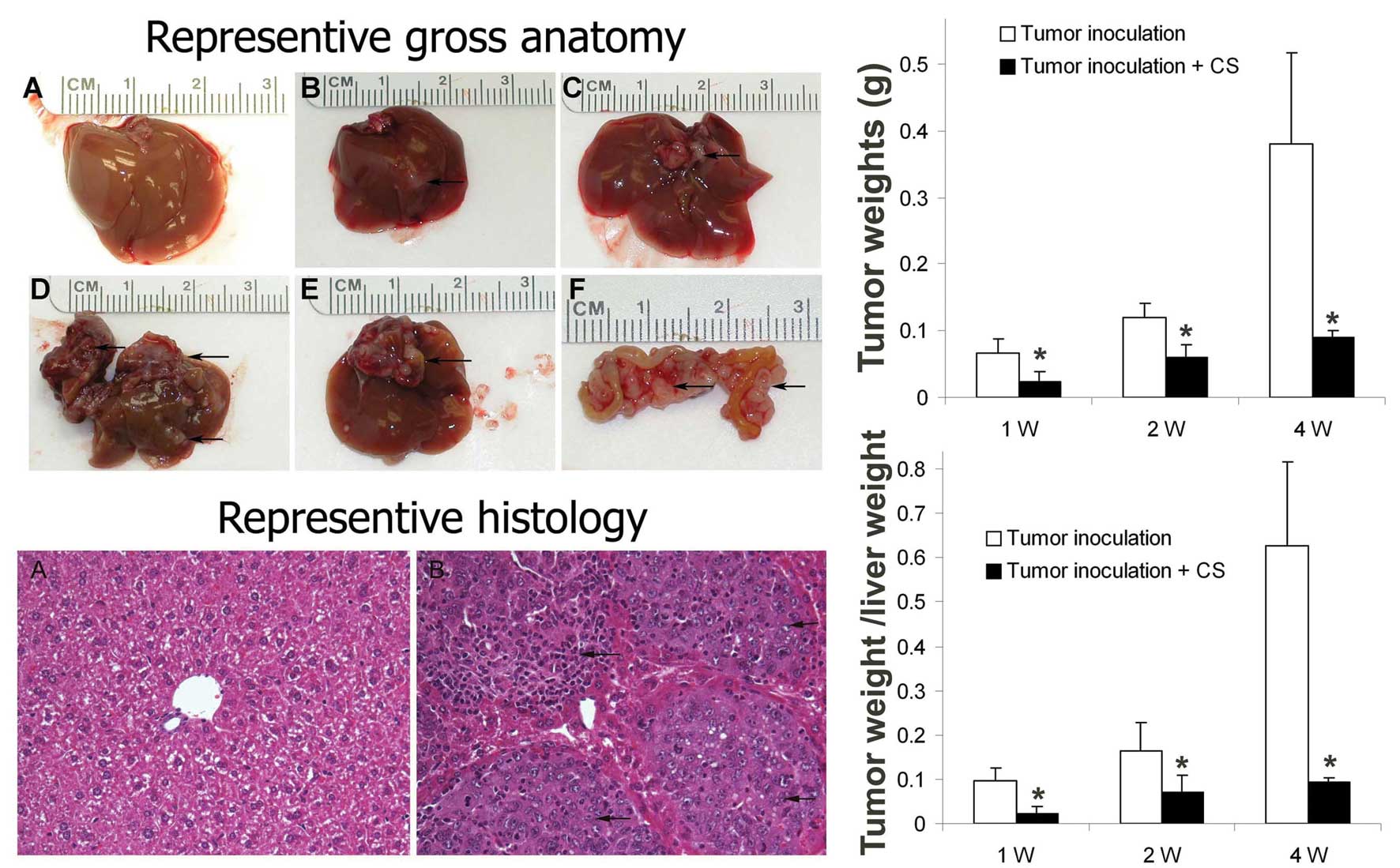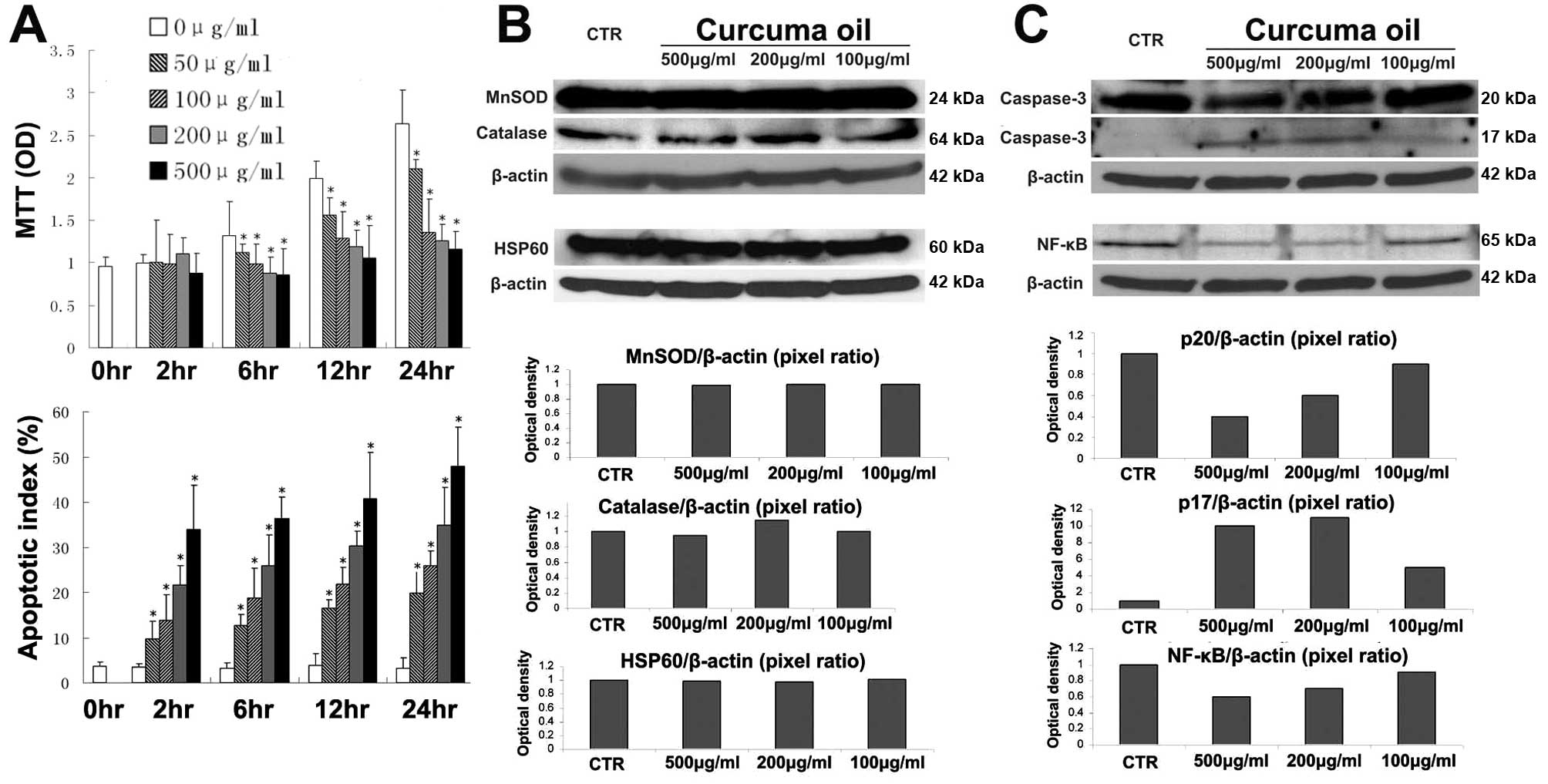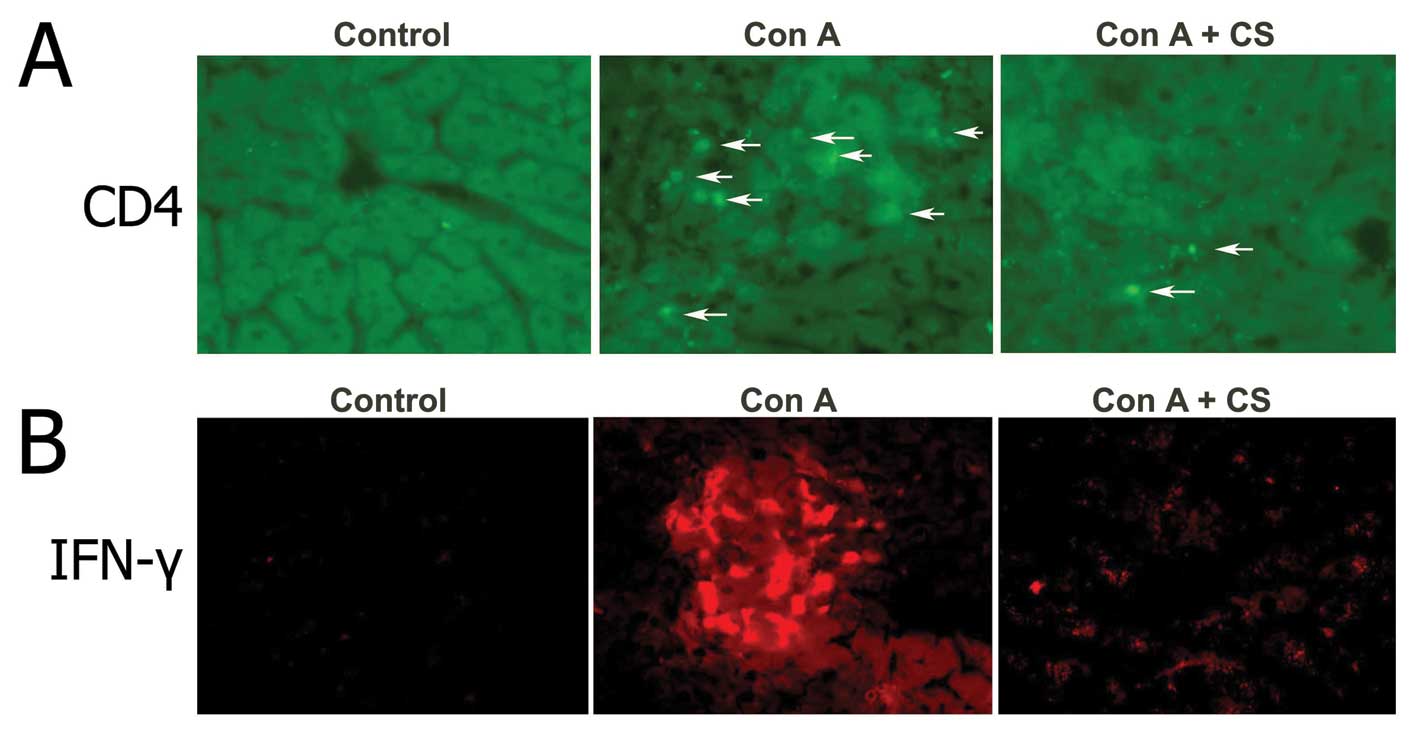|
1.
|
Farazi PA and DePinho RA: Hepatocellular
carcinoma pathogenesis: from genes to environment. Nat Rev Cancer.
6:674–687. 2006. View
Article : Google Scholar : PubMed/NCBI
|
|
2.
|
Levrero M: Viral hepatitis and liver
cancer: the case of hepatitis C. Oncogene. 25:3834–3847. 2006.
View Article : Google Scholar : PubMed/NCBI
|
|
3.
|
Moriya K, Nakagawa K, Santa T, et al:
Oxidative stress in the absence of inflammation in a mouse model
for hepatitis C virus-associated hepatocarcinogenesis. Cancer Res.
61:4365–4370. 2001.PubMed/NCBI
|
|
4.
|
Moriya K, Fujie H, Shintani Y, et al: The
core protein of hepatitis C virus induces hepatocellular carcinoma
in transgenic mice. Nat Med. 4:1065–1067. 1998. View Article : Google Scholar : PubMed/NCBI
|
|
5.
|
Koike K, Tsutsumi T, Miyoshi H, et al:
Molecular basis for the synergy between alcohol and hepatitis C
virus in hepatocarcinogenesis. J Gastroenterol Hepatol 23. (Suppl
1): S87–S91. 2008. View Article : Google Scholar : PubMed/NCBI
|
|
6.
|
Vali L, Hahn O, Kupcsulik P, et al:
Oxidative stress with altered element content and decreased ATP
level of erythrocytes in hepatocellular carcinoma and colorectal
liver metastases. Eur J Gastroenterol Hepatol. 20:393–398. 2008.
View Article : Google Scholar : PubMed/NCBI
|
|
7.
|
Zhao J, Chen J, Lu B, et al: TIP30 induces
apoptosis under oxidative stress through stabilization of p53
messenger RNA in human hepatocellular carcinoma. Cancer Res.
68:4133–4141. 2008. View Article : Google Scholar : PubMed/NCBI
|
|
8.
|
Jee SH, Shen SC, Tseng CR, Chiu HC and Kuo
ML: Curcumin induces a p53-dependent apoptosis in human basal cell
carcinoma cells. J Invest Dermatol. 111:656–661. 1998. View Article : Google Scholar : PubMed/NCBI
|
|
9.
|
Quiles JL, Mesa MD, Ramirez-Tortosa CL, et
al: Curcuma longa extract supplementation reduces oxidative
stress and attenuates aortic fatty streak development in rabbits.
Arterioscler Thromb Vasc Biol. 22:1225–1231. 2002. View Article : Google Scholar
|
|
10.
|
Zhou X, Li Z, Liang G, Zhu J, Wang D and
Cai Z: Analysis of volatile components of Curcuma
sichuanensis X. X. Chen by gas chromatography-mass
spectrometry. J Pharm Biomed Anal. 43:440–444. 2007.
|
|
11.
|
Li Y, Wo JM, Liu Q, Li X and Martin RC:
Chemoprotective effects of Curcuma aromatica on esophageal
carcinogenesis. Ann Surg Oncol. 16:515–523. 2009.
|
|
12.
|
Li Y, Wo JM, Ellis S, Ray MB, Jones W and
Martin RC: Morphological transformation in esophageal submucosa by
bone marrow cells: esophageal implantation under external
esophageal perfusion. Stem Cells Dev. 15:697–705. 2006. View Article : Google Scholar
|
|
13.
|
Xiao Y, Yang FQ, Li SP, Hu G, Lee SM and
Wang YT: Essential oil of Curcuma wenyujin induces apoptosis
in human hepatoma cells. World J Gastroenterol. 14:4309–4318.
2008.
|
|
14.
|
Hastak K, Lubri N, Jakhi SD, et al: Effect
of turmeric oil and turmeric oleoresin on cytogenetic damage in
patients suffering from oral submucous fibrosis. Cancer Lett.
116:265–269. 1997. View Article : Google Scholar : PubMed/NCBI
|
|
15.
|
Lee SK, Hong CH, Huh SK, et al:
Suppressive effect of natural sesquiterpenoids on inducible
cyclooxygenase (COX-2) and nitric oxide synthase (iNOS) activity in
mouse macrophage cells. J Environ Pathol Toxicol Oncol. 21:141–148.
2002.PubMed/NCBI
|
|
16.
|
Ji M, Choi J, Lee J and Lee Y: Induction
of apoptosis by ar-turmerone on various cell lines. Int J Mol Med.
14:253–256. 2004.PubMed/NCBI
|
|
17.
|
Yue GG, Chan BC, Hon PM, et al:
Immunostimulatory activities of polysaccharide extract isolated
fromCurcuma longa. Int J Biol Macromol. 47:342–347. 2010.
View Article : Google Scholar : PubMed/NCBI
|
|
18.
|
Bower MR, Aiyer HS, Li Y and Martin RC:
Chemoprotective effects of curcumin in esophageal epithelial cells
exposed to bile acids. World J Gastroenterol. 16:4152–4158. 2010.
View Article : Google Scholar : PubMed/NCBI
|
|
19.
|
Schiffman SC, Li Y and Martin RC: The
association of manganese superoxide dismutase expression in
Barrett’s esophageal progression with MnTBAP and curcumin oil
therapy. J Surg Res. 176:535–541. 2012.
|
|
20.
|
Aiyer HS, Li Y and Martin RC: Diet
composition affects surgery-associated weight loss in rats with a
compromised alimentary tract. J Surg Res. 168:42–48. 2011.
View Article : Google Scholar : PubMed/NCBI
|
|
21.
|
Martin RC, Aiyer HS, Malik D and Li Y:
Effect on pro-inflammatory and antioxidant genes and bioavailable
distribution of whole turmeric vs curcumin: Similar root but
different effects. Food Chem Toxicol. 50:227–231. 2012. View Article : Google Scholar : PubMed/NCBI
|
|
22.
|
Wu H, Song Z, Hentzer M, et al: Synthetic
furanones inhibit quorum-sensing and enhance bacterial clearance in
Pseudomonas aeruginosa lung infection in mice. J Antimicrob
Chemother. 53:1054–1061. 2004. View Article : Google Scholar : PubMed/NCBI
|
|
23.
|
Kroger A, Ortmann D, Krohne TU, et al:
Growth suppression of the hepatocellular carcinoma cell line
Hepa1-6 by an activatable interferon regulatory factor-1 in mice.
Cancer Res. 61:2609–2617. 2001.PubMed/NCBI
|
|
24.
|
Ravindranath V and Chandrasekhara N: In
vitro studies on the intestinal absorption of curcumin in rats.
Toxicology. 20:251–257. 1981. View Article : Google Scholar : PubMed/NCBI
|
|
25.
|
Fang JY, Hung CF, Chiu HC, Wang JJ and
Chan TF: Efficacy and irritancy of enhancers on the in-vitro and
in-vivo percutaneous absorption of curcumin. J Pharm Pharmacol.
55:11752003. View Article : Google Scholar
|
|
26.
|
Wu W, Deng R and Ou Y: Therapeutic
efficacy of microsphere-entrapped Curcuma aromatica oil
infused via hepatic artery against transplanted hepatoma in rats.
Zhonghua Gan Zang Bing Za Zhi. 8:24–26. 2000.In Chinese.
|
|
27.
|
Deng SG, Wu ZF, Li WY, et al: Safety of
Curcuma aromatica oil gelatin microspheres administered via
hepatic artery. World J Gastroenterol. 10:2637–2642. 2004.
|
|
28.
|
Luo Q, Wang Y, Feng D, Xu Y and Xu L:
Vasoactive intestinal peptide attenuates concanavalin A-mediated
liver injury. Eur J Pharmacol. 607:226–233. 2009. View Article : Google Scholar : PubMed/NCBI
|
|
29.
|
Jiang W, Sun R, Zhou R, Wei H and Tian Z:
TLR-9 activation aggravates concanavalin A-induced hepatitis via
promoting accumulation and activation of liver CD4+NKT
cells. J Immunol. 182:3768–3774. 2009. View Article : Google Scholar : PubMed/NCBI
|
|
30.
|
Jang MK, Lee HJ, Kim JS and Ryu JH: A
curcuminoid and two sesquiterpenoids from Curcuma zedoaria
as inhibitors of nitric oxide synthesis in activated macrophages.
Arch Pharm Res. 27:1220–1225. 2004.PubMed/NCBI
|
|
31.
|
Funk JL, Frye JB, Oyarzo JN, et al:
Efficacy and mechanism of action of turmeric supplements in the
treatment of experimental arthritis. Arthritis Rheum. 54:3452–3464.
2006. View Article : Google Scholar : PubMed/NCBI
|
|
32.
|
Tohda C, Nakayama N, Hatanaka F and
Komatsu K: Comparison of anti-inflammatory activities of six
Curcuma rhizomes: a possible curcuminoid-independent pathway
mediated by Curcuma phaeocaulis extract. Evid Based
Complement Alternat Med. 3:255–260. 2006.PubMed/NCBI
|
|
33.
|
Tiegs G, Hentschel J and Wendel A: A T
cell-dependent experimental liver injury in mice inducible by
concanavalin A. J Clin Invest. 90:196–203. 1992. View Article : Google Scholar : PubMed/NCBI
|
|
34.
|
Tiegs G: Cellular and cytokine-mediated
mechanisms of inflammation and its modulation in immune-mediated
liver injury. Z Gastroenterol. 45:63–70. 2007. View Article : Google Scholar : PubMed/NCBI
|
|
35.
|
Hong F, Jaruga B, Kim WH, et al: Opposing
roles of STAT1 and STAT3 in T cell-mediated hepatitis: regulation
by SOCS. J Clin Invest. 110:1503–1513. 2002. View Article : Google Scholar : PubMed/NCBI
|
|
36.
|
Rathore P, Dohare P, Varma S, et al:
Curcuma oil: reduces early accumulation of oxidative product and is
anti-apoptogenic in transient focal ischemia in rat brain.
Neurochem Res. 33:1672–1682. 2008. View Article : Google Scholar : PubMed/NCBI
|
|
37.
|
Ramirez-Tortosa MC, Mesa MD, Aguilera MC,
et al: Oral administration of a turmeric extract inhibits LDL
oxidation and has hypocholesterolemic effects in rabbits with
experimental atherosclerosis. Atherosclerosis. 147:371–378. 1999.
View Article : Google Scholar : PubMed/NCBI
|
|
38.
|
Asai A, Nakagawa K and Miyazawa T:
Antioxidative effects of turmeric, rosemary and capsicum extracts
on membrane phospholipid peroxidation and liver lipid metabolism in
mice. Biosci Biotechnol Biochem. 63:2118–2122. 1999. View Article : Google Scholar : PubMed/NCBI
|
|
39.
|
Miquel J, Bernd A, Sempere JM, Diaz-Alperi
J and Ramirez A: The curcuma antioxidants: pharmacological effects
and prospects for future clinical use. A review. Arch Gerontol
Geriatr. 34:37–46. 2002. View Article : Google Scholar : PubMed/NCBI
|
|
40.
|
Rajakrishnan V, Viswanathan P,
Rajasekharan KN and Menon VP: Neuroprotective role of curcumin from
Curcuma longa on ethanol-induced brain damage. Phytother
Res. 13:571–574. 1999. View Article : Google Scholar
|
|
41.
|
Cao J, Qi M, Fang L, Zhou S, Fu R and
Zhang P: Solid-phase microextraction-gas chromatographic-mass
spectrometric analysis of volatile compounds from Curcuma
wenyujin Y.H. Chen et C. Ling. J Pharm Biomed Anal. 40:552–558.
2006. View Article : Google Scholar : PubMed/NCBI
|
|
42.
|
Wu WY, Xu Q, Shi LC and Zhang WB:
Inhibitory effects of Curcuma aromatica oil on proliferation
of hepatoma in mice. World J Gastroenterol. 6:216–219. 2000.
|
|
43.
|
Auyeung KK, Law PC and Ko JK: Astragalus
saponins induce apoptosis via an ERK-independent NF-kappaB
signaling pathway in the human hepatocellular HepG2 cell line. Int
J Mol Med. 23:189–196. 2009.PubMed/NCBI
|



